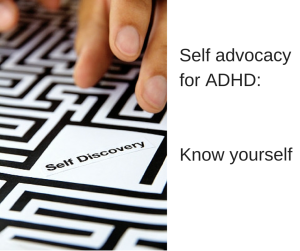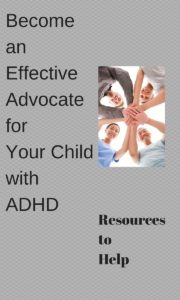Casting a Wider Net: Section 504 Under the 2008 ADA Amendments Act (ADAAA)
© Lisa M. LaVardera, Esq.
In 2008, Congress amended the Americans with Disabilities Act, significantly broadening the definition of disability, beginning in 2009. That change impacted the definition of disability under Section 504, one of two statutes from which children receive special education services in school, (the other being The Individuals with Disabilities Education Act, or IDEA.). The major changes as they pertain to students with disabilities, including children with ADHD, 2e children, and other bright children who may not have qualified for special education services or accommodations are significant, and are summarized herein.
What’s Section 504 got to do with the ADA?
Both are civil rights laws that protect individuals with disabilities from being discriminated against in our public schools. Section 504 was enacted in 1973 and applies to all programs and activities that receive federal money. This includes public schools, colleges, and universities as well as certain employers, state and local government programs, and places of public accommodation, such as a public library, courthouse or Federal office building. (It’s hard to find any school, including private school that does not receive some financial assistance from the government.) The ADAAA includes a “conforming amendment” to Section 504 of the Rehabilitation Act; meaning that the newly expanded coverage under ADAAA also applies to Section 504. Since both statutes are interpreted in parallel, the ADA impacts Section 504. While the wording of Section 504 did not change, because of the ADAAA, it’s interpretation has. The main key to understanding Section 504 is that it is essentially a civil rights anti-discrimination statute, designed to level the playing field between a person with a disability and his non-disabled peers, when it comes to equal access to governmental sponsored activities, venues and rights. It confers no federal funding upon the states, it is an unfunded mandate.
Today, the key difference between Section 504 and IDEA is that under 504, the level of restriction is the determining factor, not the severity of the impairment, or adverse educational impact. Further, a substantial limitation in one major life activity need not be limiting in other major life activities in order to be considered a disability, and consideration must be made on a case-by-case basis, according to the “reasonable person” standard. (If a reasonable person/ average person would consider that disability to be materially restricting.)
These changes are especially important if your child:
- Was previously evaluated under IDEA and was found ineligible.
- Was previously evaluated under Section 504 and was found ineligible.
- Already has a 504 plan.
- Is already receiving informal accommodations.
- Needs accommodations from the College Boards.
- Is applying to college.
Why The Change?:
Previously, the definition of disability was described in Section 504 of the Rehabilitation Act of 1973. Under Section 504, a person was considered to be a person with a disability if he: (1) had a physical or mental impairment which substantially limited a major life activity and; 2) had a record of such impairment; or (3) was regarded as having such an impairment. Once a person met that standard, they could receive a “reasonable accommodation.” Over the years a few landmark employment law cases made it to the Supreme Court, which decisions tightened the requirements by which a person could be considered disabled for purposes of employment and disability law. Congress thought that those Supreme Court decisions contradicted their congressional intent of protecting people with disabilities, and so Congress revised the Americans with Disabilities Act (The ADAAA), to re- clarify and broaden the interpretation of disability and realign it with the original Congressional intent (which was whether the school, entity or facility met its obligations under the law, not whether the claimant met the definition of disability.)
What’s New?:
The Definition of Major Life Activity:
The definition of “major life activities” was expanded to include learning, reading, concentrating, thinking and even sleeping. And the definition of “major bodily functions” was expanded to include neurological, digestive, reproductive and brain functions.
The Definition of Disability:
The definition of “disability” is to be broadly, rather than narrowly interpreted. And a limitation in one major life activity need not impact other major life activities. Eg., a reading disability need not impact all subject areas to be considered a “disability.”
The Definition of Substantial Limitation:
The ADA as revised by Congress has now clarified “substantially limits” with a lower standard of “materially restricts.” While the wording of Section 504 did not change, because of the ADAAA, it’s interpretation has. Today, the level of restriction is the determining factor, not the severity of the impairment. Further, a substantial limitation in one major life activity need not be limiting in other major life activities in order to be considered a disability, and must be made on a case-by-case basis. This change significantly broadened the definition of what constitutes a “disability.”
No Requirement of Educational Need:
Accordingly, the threshold for “educational need” is now more flexible under 504 than it is under IDEA. Under 504, educational need or adverse educational impact is not the threshold for evaluation; the disability is. (Think disability plus some level of restriction in some area regarding learning, thinking, communicating, and so on, versus the requirement of “adverse educational impact” under IDEA.) The threshold is not the same.
No Requirement to Fail:
As for twice exceptional children, or bright children who did not previously qualify for special education services; under the new interpretation under 504, a district may not use a child’s superior or adequate grades as a reason to refuse to evaluate him. A 504 plan may still be appropriate even in cases where the disability does not impact learning. Nothing in the ADA or Section 504, or IDEA for that matter, limits eligibility to students who suffer academically. Therefore a district may not refuse to evaluate a child whose disability has no educational impact if the child meets the new definition of disability under the ADAAA and thus 504. Thus, schools can no longer tell parents that their child doesn’t qualify for an evaluation or a 504 plan solely because he is “doing okay without any intervention.” To say this is now a violation, says the U.S. Department of Education Office of Civil Rights (OCR). Other information about the disability must still be considered. The child may, after a full evaluation, still not qualify for a particular accommodation or service, but he must still be evaluated, if he has a physical or mental impairment that materially restricts one or more major life activities; has a record of such an impairment, or is regarded as having such an impairment, regardless of good grades.
Definition of Reasonable Accommodation:
A “reasonable accommodation” has no definition in educational law and no limit at the moment, other than undue hardship on the part of the district. And, the accommodation requested does not need to be directly related to the specific disability. (That does not mean however, that the sky is the limit in requesting accommodations from the school district. The accommodation request can still be denied if the school district feels it is unreasonable, and then it is up to the hearing officer, or judge to decide.)
No Consideration of Mitigating Measures:
Mitigating measures cannot be considered in determining substantial limitation (except for contacts and eyeglasses), and if mitigating measures create an additional impact, there must also be an accommodation for that issue caused by the mitigating measure. A student must be able to use a mitigating measure independently; if the school personnel has to do something, then the disability is not mitigated. When determining whether the disability materially restricts a major life function, school districts must do a “look back” evaluation to determine what the child is like when off medication or without the mitigating measure. That is a very difficult task, but good news for kids with ADHD who take medications to help them focus. They must be evaluated based on what their behavior would be when un-medicated.
No Penalty for Self-Accommodations:
And perhaps the most important change: kids who have learned to “self-accommodate,” adapt—or compensate, as we like to call it—now cannot be penalized for learning to manage the disability on their own. Learned adaptive skills are a mitigation that may not be taken into consideration when determining substantial limitation. A child with a reading disability who can still learn in other ways is still disabled for the purposes of the new interpretation under Section 504, perhaps even if he is an honor roll student. This change significantly benefits children with ADHD, and other children who were bright enough, or had enough compensatory skills to slip under the classification radar.
What Conditions Are Covered?:
In addition to disorders of learning, reading, concentrating, thinking and sleeping, other biological conditions are now covered. Diseases in remission are now considered as if they were active. (Yes, you can get a 504 plan for cancer in remission, if it materially restricts you in some way.) Alcohol problems are covered, although drug addiction is not. Other biological conditions such as gastro disease, neurological, brain, and reproductive disorders also fall under 504 protection. Medical needs, if they trigger 504 services are now a burden that the district must bear. And service dogs are now covered and may be allowed in schools.
Children Who Are Bullied:
Another interesting wrinkle, children who are bullied may fall under the “regarded as” prong if they are bullied as a result of their perceived disability. And, according to Congress in revising the ADA, that discrimination provides them protection under 504, whether the disability is “substantially limiting” or not. This is a very interesting new wrinkle. Conceivably, a child may be entitled to an accommodation for being bullied if he is discriminated against (bullied because he had a disability), whether or not his disability is materially restricting enough to otherwise qualify for Section 504 protections or accommodations.
Evaluations Under Section 504:
Evaluations under the new interpretation of Section 504 must be comprehensive and look at all areas of learning: thinking, concentration, communicating, and so on. School Districts must meet 504’s evaluation and placement procedural requirements when developing the plan. For children with medical conditions who previously had an IHP (health response plan), the IHP may no longer be sufficient to meet 504 procedural requirements and they may need to be upgraded to a 504 plan.
Clinicians who do private evaluations and recommend a 504 plan should be aware that their evaluations: must clearly show how the disability materially restricts a major life activity; how it impacts learning; (thinking, concentrating, communicating, and so on); also address any deficits masked by mitigating or self-accommodation measures, (what the child looks like off medications); and list any accommodation required for any effect of a mitigating measure. This is especially important for children who are high functioning and have no adverse educational impact.
What Is The New Standard of Education under Section 504?
That’s a really good question. The standard of FAPE, (Free Appropriate Public Education) is not the same as under IDEA. Section 504 regulations define appropriate education as “the provision of regular or special education and related aids and services that (i) are designed to meet individual educational needs of handicapped persons as adequately as the needs of non-handicapped persons are met and (ii) are based upon adherence to procedures that satisfy the requirements” of the additional regulations governing educational setting, evaluation and placement, and procedural safeguards.
Two notable cases, Lyons and Mark H., establish that the 504 “appropriate education” standard is enforceable, and that the standard it imposes on public schools is different from the IDEA appropriate education standard, maybe lower, maybe higher, depending on the circumstances of your particular school district. For example, a wealthy district that offers multiple programs and activities for nondisabled children, would be held to a higher standard of education for children covered by 504, a standard well above what IDEA calls for. Poorer school districts that offer a barely decent level of services and instruction to children without disabilities, might be able to get away with providing lesser services to their children with disabilities, which may fall far below the expectations of IDEA. How this will play out especially in wealthier districts whose kids have more positive outcomes, remains to be seen. At this point in time, remember there is no definitive limit to 504 services, as long as they provide an equal opportunity for FAPE as that enjoyed by the non-disabled peers.
Remember, under IDEA, the IEP compares the child to his own best capacities, (more person-centered) while Section 504, when looking at the impact of the disability, compares him to his same age peers across the nation. But, the obligations of school districts and other entities are measured by how equally they provide access and services to the disabled versus non-disabled, and that is a local standard. And, when assessing violations of the ADA and 504, the focus is on the school or entity, not the disability, or the person with the disability. This is an entirely different paradigm than under IDEA.
All services, accommodations and modifications must level the playing field in order to be 504 compliant. Not all actually do what they are intended to do. A level playing field means an equal opportunity to succeed in school. It does not mean maximization of your child’s potential.
By now all school districts must have updated their 504 evaluation criteria, procedural requirements, manuals, materials, parent letters, prior written notice letters, etc., and trained personnel not to make statements or policy that violates Section 504. The Office of Civil Rights has said it will enforce Section 504 in a manner consistent with the ADA Amendments Act. Because school districts must create their own evaluation procedures under Section 504, this is particularly challenging. Also, Section 504 does and has always included the provision of services, as well as accommodations and modifications. There is nothing in the statute that limits 504 in that regard, but for some reason school districts forget that. But, perhaps the most challenging issue facing school districts is understanding that even children who are doing adequately in school may still qualify for Section 504 accommodations and services, if they have a disability that materially restricts a major life activity.
What Should Parents Do?:
Clearly, these changes suggest that any child previously refused services under the old interpretation of Section 504 should promptly request an evaluation under the new interpretation of Section 504. This is especially important for children who did not meet threshold criteria before or who may have had a discipline involvement (or both) and who are now otherwise protected under the “regarded as” prong of 504 (for example, already receiving informal accommodations). It is also important for college-bound teens and those seeking accommodations on college boards to be promptly re-evaluated under Section 504. (However, the college board makes it’s own decisions under Section 504, independent of the school.)
Do not expect your school district to fully understand the ramifications of these changes. Parents must be proactive and vigilant in protecting their children’s Section 504 rights, even if their school is not.
Ask, ask, ask for a new evaluation. Be prepared with data and information about your child’s disability, and include examples of how your child functions without their medications or self-accommodations in ALL areas of learning, thinking, communicating, etc. If your child has another type of disease or disability that is now covered, including gastro-intestinal, immunological, or cancer remission, remember to ask for a 504 plan for any issues arising out of that disease or it’s treatment. Use your knowledge about your child to paint a picture for the committee.
Be specific about what services and/or accommodations you think they need to level the playing field in school. Services are included under 504, do not be afraid to ask for “504 Services” by name. Services that your child may have been denied under IDEA may be appropriate and more easily accessible under the new interpretation of Section 504.
Be a very attentive listener. If you hear a comment from your school district that violates Section 504, as indicated above, report it to OCR, you can file an OCR complaint online.
Conclusion:
For many years the focus was on IDEA and the IEP and obtaining IEP services. Children who had a 504 plan in school rarely got the same level of services or procedural protections as those given to children under IDEA. In fact, the 504 plan was regarded as the “ugly stepchild” of special education. Today, the ADA Amendments Act has created a paradigm shift in the way we look at children with disabilities, assess them and service them. There seems to be no end in sight to the possibilities and potential ramifications of the new interpretation of Section 504. But more importantly, it has opened a world of new possibilities for more students, and especially higher achieving students with disabilities to receive appropriate services and accommodations for disabilities that went un-noticed, un-validated, and un-serviced under IDEA.
Disclaimer: Please be advised that this information is not intended to take the place of legal advice. For specific legal questions seek the advice of a licensed attorney.
© Lisa M. LaVardera, Esq. – All rights reserved. Articles may be reproduced or electronically distributed as long as attribution to Lisa M. LaVardera, Esq. is maintained.
Find the original article at: PTS Coaching – Casting a Wider Net
Follow ADHD – ADD’s board Advocacy help – Education on Pinterest.











